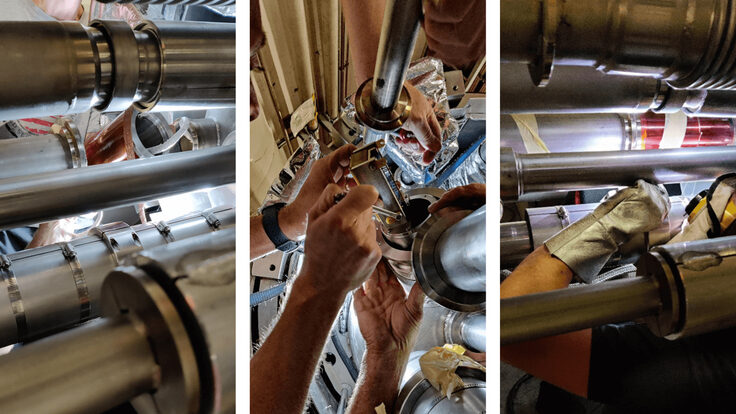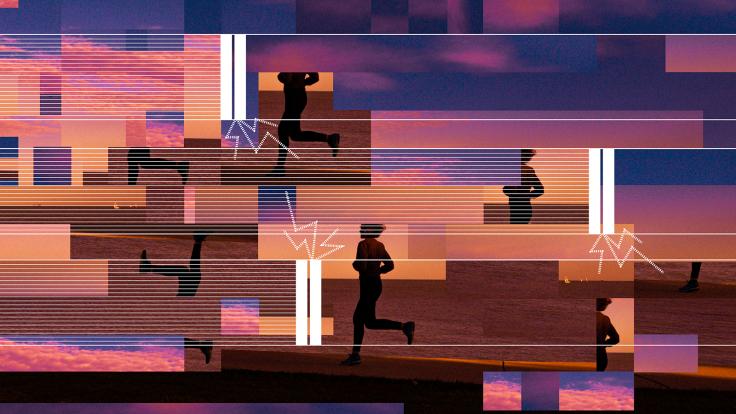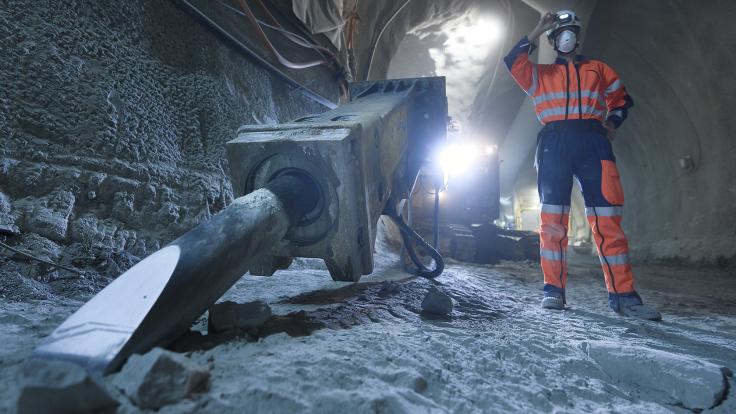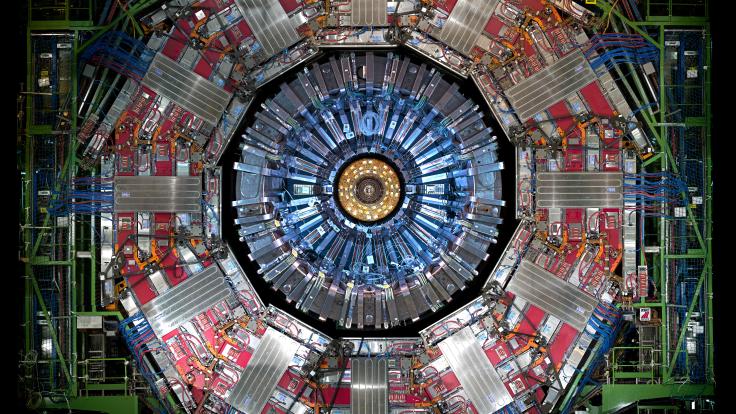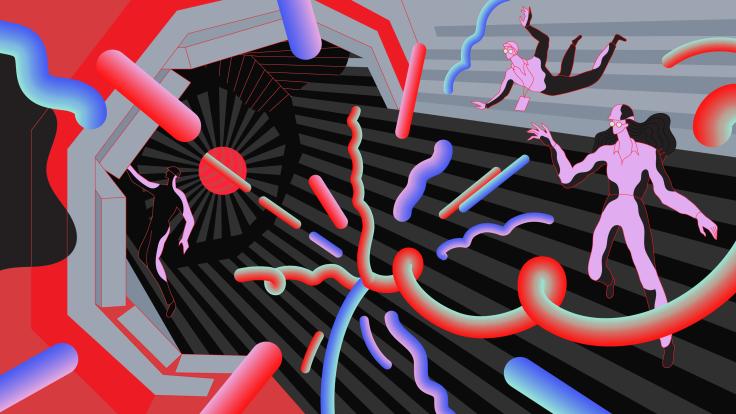Scientists have never actually seen the Higgs boson. They’ve never seen the inside of a proton, either, and they’ll almost certainly never see dark matter. Many of the fundamental patterns woven into the fabric of nature are completely imperceptible to our clunky human senses.
But scientists don’t need to see particles to learn about their properties and interactions. Physicists can study the subatomic world with particle detectors, which gather information from events that occur much faster and are much smaller than the eye can see.
But what is this information, and how exactly do detectors gather it? At experiments at the Large Hadron Collider, the world's largest and most powerful particle accelerator, it all begins with a near-light-speed race.
Starting with a bang
The LHC is built in a ring 17 miles in circumference. Scientists load bunches of protons into this ring and send them hurtling around in opposite directions, gaining more and more energy with each pass.
By the time the LHC has boosted the proton beams to their maximum energy, they will have traveled a distance equivalent to a round-trip journey between Earth and the sun. They will be moving so fast that they no longer convert energy into speed but in effect swell with mass instead.
Once the protons are ramped up to their final energy, the LHC’s magnets nudge the two beams into a collision course at four intersections around the ring.
“When two protons traveling at near light speeds collide head-on, the impact releases a surge of energy unimaginably quickly in an unimaginably small volume of space,” says Dhiman Chakraborty, a professor of Physics at Northern Illinois University working on the ATLAS experiment. “In that miniscule volume, conditions are similar to those that prevailed when the universe was a mere tenth of a nanosecond old.”
This energy is often converted directly into mass according to Einstein’s famous equation, E=mc2, resulting in birth of exotic particles not to be found anywhere else on Earth. These particles, which can include Higgs bosons, are extremely short-lived.
“They decay instantaneously and spontaneously into less massive, more stable ‘daughter’ particles,” Chakraborty says. “The large mass of the exotic parent particle, being converted back into energy, sends its much lighter daughters flying off at near light speeds.”
Even though these rare particles are short-lived, they give scientists a peek at the texture of spacetime and the ubiquitous fields woven into it.
“So much so that the existence of the entire universe we see today—ourselves as observers included—is owed to [the particles and fields we cannot see],” he says.

This CMS experiment event display identifies an electron and a muon passing through the detector.
Enter the detector
All of this happens in less than a millionth of a trillionth of a second. Even though the LHC’s detectors encompass the beampipe and are only a few centimeters away from the collison, it is impossible for them to see the new heavy particles, which often disintegrate before they can move a distance equal to the diameter of an atomic nucleus.
But the detectors can “see” the byproducts of their decay. The Higgs bosons can transform into pairs of photons, for example. When those photons hit the atoms and molecules that make up the detector material, they radiate sparkles of light and jolts of energy like meteorites blazing through the atmosphere. Sensors inhale these dim twinkles and transform them into electrical signals, recording where and when they arrived.
“Each pulse is a snapshot of space and time,” Chakraborty says. “They tell us exactly where, when and how fast those daughter particles traversed our detector.”
A single proton-proton collision can generate several high-energy daughter particles, some of which produce showers of hundreds more. These streams of particles release detectable energy as they hit the detectors and generate electrical pulses. The time, location, length, shape, height and total energy of each electrical pulse are directly translated into data bits by an electronic readout card.
Much the way biologists chart animal tracks to study the speed, direction and size of a herd, physicists study the shape of these electrical pulses to characterize the passing particles. A long, broad electrical pulse indicates that a large stream of particles grazed across the detector, but a pulse with a sharp peak suggests that a small pack cut straight through.
These electrical pulses create a multifaceted connect-the-dots. Algorithms quickly identify patterns in the cascade of hits and rapidly reconstruct particle energies and tracks.
“We only have a few microseconds to reconstruct what happened before the next batch of collisions arrives,” says Tulika Bose, an associate professor at Boston University working on the CMS experiment. “We can’t keep all the data, so we use automated systems to crudely reconstruct particles like muons and electrons.
“If the event looks interesting enough based on this limited amount of information, we keep all the data from that snapshot in time and save them for further analysis.”
These interesting events are packaged and dispatched upstairs to a second series of automated gatekeepers that further evaluate the quality and characteristics of these collision snapshots. Preprogrammed algorithms identify more particles in the snapshot. This entire process takes less than a millisecond, faster than the blink of a human eye.
Even then, humans won’t lay eyes on the data until after it undergoes a strenuous suite of processing and preparation for analysis.
Humans can’t see the Higgs boson, but by tracing its byproducts back to a single Higgs-like origin, they were able to gather enough evidence to discover it.
“In the five years since that discovery, we’ve produced hundreds of thousands more Higgs bosons and reconstructed a good number of them,” Chakraborty says. “They’re being studied intensely with the goal of gaining insight into deeper mysteries of nature.”




